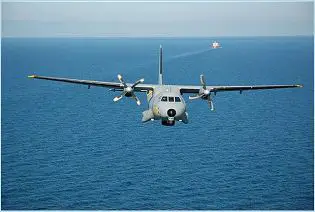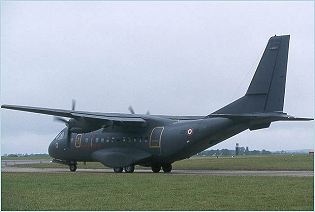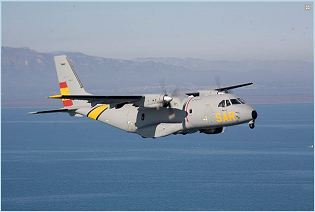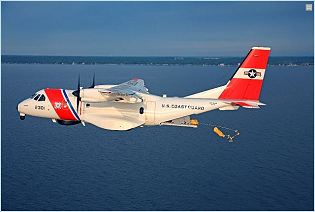| |
||||||||||||||||||||||
| a | ||||||||||||||||||||||
CN235
medium-range military transport aircraft |
||||||||||||||||||||||
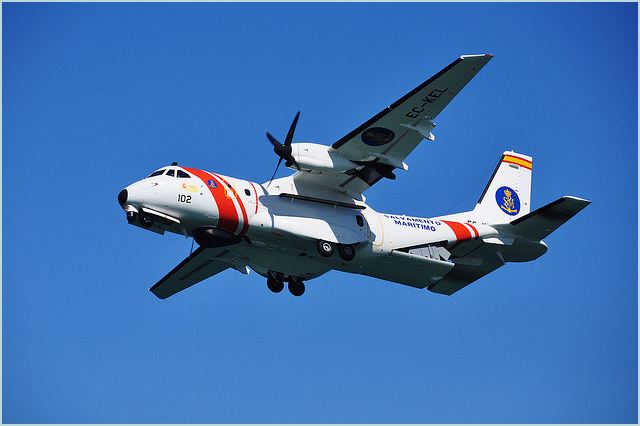 |
||||||||||||||||||||||
| |
||||||||||||||||||||||
The
CN235 is a medium-range twin-engined transport plane that was jointly
developed by CASA of Spain and Indonesian manufacturer IPTN, now under
the control of Airbus Military of Spain. The well-proven CN235 is the
lowest cost solution to meet the needs and requirements of governments
and air forces, as well as non-governmental organisations in the light
and medium airlift field. Able to carry up to six tonnes / 13,200lb
of payload, or up to 51 personnel, the CN235 has gained vast experience
in daily airlift missions, in the deployment and logistic support of
peacekeeping forces and in disaster relief operations or any other ‘civic’
missions for the benefit of society. In addition, and thanks to its
versatility and multi-mission capabilities, it is also widely used for
maritime surveillance and homeland security applications. The current
CN235 model in production (CN235-300) was certified in 1998 It benefits
from simple systems design and robustness, excellent flying qualities,
and great versatility, as well as remarkable transport capabilities.
The CN235’s reliability and dependability has also been widely
demonstrated. In service with some 40 operators worldwide, the aircraft
has accumulated over one million flight hours. And with more than 270
sold , the CN235 is the best selling airlifter in the light/medium segment.
|
||||||||||||||||||||||
| Variants | ||||||||||||||||||||||
-
CN-235-100/110: Generally as series 10, but with GE CT7-9C
engines in new composites nacelles; replaced Series 10 in 1988 from
31st production aircraft. Series 100 is Spanish-built, series 110 Indonesian-built,
with improved electrical, warning and environmental systems. - CN-235-200/220: Improved version. Structural reinforcements to cater for higher operating weights, aerodynamic improvements to wing leading-edges and rudder, reduced field length requirements and much-increased range with maximum payload. Series 200 is Spanish-built, Series 220 Indonesian-built. - CN-235-300: CASA Modification of 200/220 series, with the Honeywell International Corp. avionics suite. Other features include improved pressurisation and provision for optional twin-nosewheel installation. - CN-235-330 Phoenix: Modification of Series 200/220, offered by IPTN with new Honeywell avionics, ARL-2002 EW system and 16.800 kg/37.037 lb MTOW, to Royal Australian Air Force to meet Project Air 5190 tactical airlift requirement, but was forced by financial constraints to withdraw in 1998. - CN-235 MPA: Maritime patrol version with 6 hardpoints to carry AM-39 Exocet-Missiles or Mk.46-Torpedos. - HC-144 Ocean Sentry: United States Coast Guard designation for a planned twenty-two aircraft fleet bought to replace the small HU-25 Guardian business-style jets. As of 2010, twelve had been delivered. |
||||||||||||||||||||||
| Technical Data | ||||||||||||||||||||||
| Design | ||||||||||||||||||||||
The
CN235 offers an unobstructed, constant fuselage section, 9.65 m / 31.7
ft long, with a pressurised cabin which can be quickly changed, with
minimum tools and manpower, from a cargo carrier to a personnel transporter,
or to a medical evacuation aircraft. In its cargo role, the CN235, which
is fitted with a reinforced heavy-duty floor, can carry up to six tonnes
/ 13,100 lb of cargo. It can accommodate palletised cargo. Options include
four military standard 88in x 108in HCU-6/E pallets - 463L system-,
including one on the ramp, or up to eight 88in x 54in pallets. It can
also carry bulk cargo, and can be used for aerial delivery with direct
off-loading through its rear ramp. The full-width rear ramp door allows
easy loading/offloading of bulky items such as light vehicles or up
to three fighter engines, and allows full cargo interoperability with
CH-47 Chinook helicopters and C-130 aircraft. The ramp can be opened
in flight at speeds of up to 160 kt for aerial delivery. In addition
to the ramp, the CN235 is equipped with one crew door and two paratrooper
doors. When used for personnel transportation, it can accommodate 51
seats, including a central seat row, or carry 35 paratroops plus one
jumpmaster on just the foldable lateral seats.. The CN235 can also be
used for medical evacuation operations, with 18 stretchers and four
medical attendants, or an Intensive Care Unit. The CN235 is also designed
to provide outstanding low-level flight characteristics for tactical
missions, flying at speeds down to 100 kt, and even lower (STOL landing
speed is less than 95 kt at maximum weight). Its excellent handling
qualities, high manoeuvrability and fast engine response (two General
Electric GE CT7-9CE-3, 1750 shp) allow safe critical operations at low
altitude. |
||||||||||||||||||||||
| Avionics | ||||||||||||||||||||||
The
CN235 avionics system supports present and future requirements to operate
in both civil and military environments. The aircraft is equipped with
five multifunctional displays, an integrated engine display system,
an automatic flight control system, and a dual flight management system.
The Series 300 CN-235 cockpit is night-vision-goggle compatible and
fitted with twin head-up displays. The electronic flight and information
system, a Rockwell Collins EFIS-85B (14), has four 152mm x 203mm (6in
x 8in) liquid crystal displays. The CN235 is equipped with an open-systems
avionics suite with MIL-STD-1553B and ARINC 429 military digital databuses,
a Thales (formerly Sextant) Avionics Topdeck colour weather, flight
data recorder, cockpit voice recorder, advanced terrain collision avoidance
system (enhanced TCAS) and Ground Proximity Warning System (GPWS). |
||||||||||||||||||||||
| Propulsion | ||||||||||||||||||||||
The
CN235 is able to cruise at altitudes up to 25,000ft, and speeds up to
245kt / 454 km/h, while retaining remarkable low level flight characteristics,
as well as short take-off & landing (STOL) capabilities. Powered
by two General Electric GE CT7-9CE, 1,750 shp turboprop engines, the
CN235 provides excellent manoeuvrability, fast engine response, outstanding
hot and high performance, low fuel consumption and consequently a very
long endurance of up to 11 hours. |
||||||||||||||||||||||
| Armament | ||||||||||||||||||||||
Six
underwing hardpoints allow the carriage of antishipping missiles such
as Exocet and Harpoon. MPA can be armed with two Mk 46 torpedoes |
||||||||||||||||||||||
| Specifications | ||||||||||||||||||||||
|
||||||||||||||||||||||
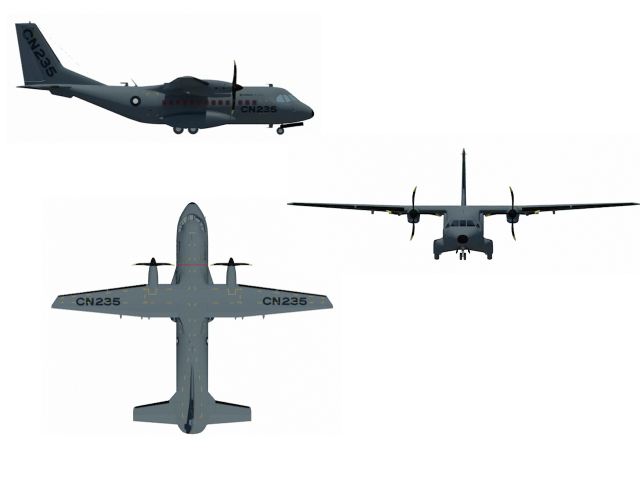 |
||||||||||||||||||||||
|
||||||||||||||||||||||
| |
||||||||||||||||||||||
CN-235 Medium range military transport aircraft technical data sheet specifications intelligence description information identification pictures photos images video Spain Spanish Air Force aviation defence industry technology
- Posted On

